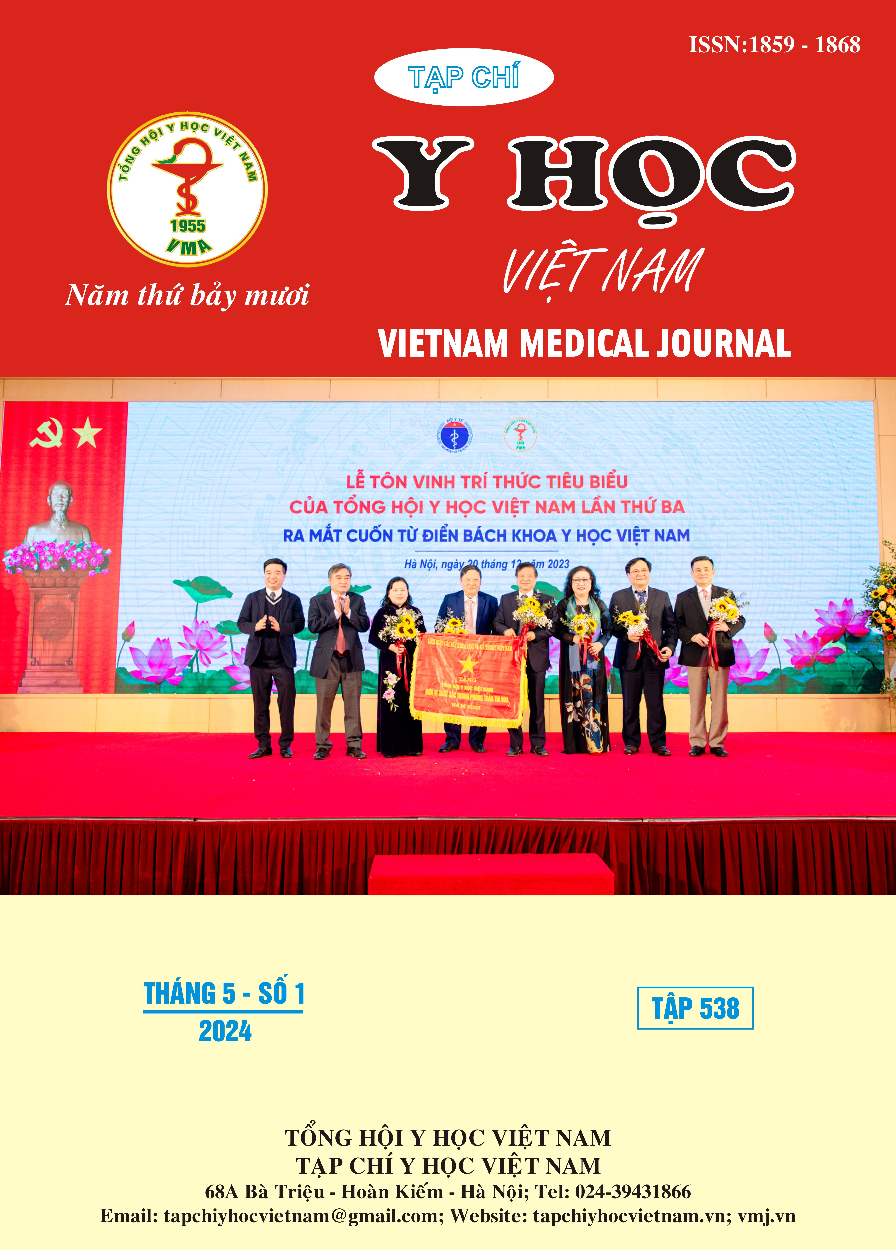STUDY ON THE EFFECTS OF THE CAPSULE “TD.NQ” IN THE TREATMENT OF KNEE OSTEOARTHRITIS IN EXPERIMENT
Main Article Content
Abstract
Objective: Study the treatment effects of knee osteoarthritis of capsules "TD.NQ" on experimental animals. Subjects and methods: Wistar white rats (provided by the Vietnam Military Medical Academy). Both breeds, healthy, weight 180 ± 40 g. Method: Research on the treatment of knee osteoarthritis with TD.NQ capsules on mice with MIA-induced knee osteoarthritis, through inflammatory cytokine indices, knee joint area diameter and histopathology. Results: At a dose of 12,798 g/kg, the increase in knee joint diameter in mice decreased compared to the model group at all times, especially at the time of after 1, 3, 4 and 5 weeks (p < 0.05, p < 0.01). This effect is better than the dose of 4,266 g/kg but didn’t pass Diclofenac 3mg/kg. At a dose of 12,798 g/kg, interleukin-1β concentration decreased significantly compared to the model batch (p < 0.01), with no difference compared to the biological control and compared to diclofenac 3mg/kg (p > 0.05). At a dose of 12,798 g/kg, TNF-α concentration decreased significantly compared to the model batch (p < 0.05), not different from the biological control and diclofenac 3mg/kg (p > 0 .05). The knee joint histopathological damage score decreased from 50 to 36 and 35 in the two treatment batches respectively. Conclusion: TD.NQ both doses 4,266 g/kg and 12,798 g/kg are effective in reducing interleukin-1β and TNF-α indices, reducing the diameter of the knee joint area on inflamed knee joints, and improving joint histopathology. research mouse pillow. TD.NQ dose 12,798 g/kg tends to have a better effect than dose 4,266 g/kg, but the difference is not statistically significant.
Article Details
Keywords
osteoarthritis, TD.NQ, traditional medicine.
References
2. Đỗ Trung Đàm (2006), Phương pháp ngoại suy liều có hiệu quả tương đương giữa người và động vật thí nghiệm. Phương pháp nghiên cứu tác dụng dược lý của thuốc từ dược thảo. Nhà xuất bản khoa học và kỹ thuật. Tạp chí dược học, số 479, tr. 38-41
3. Hoàng Bảo Châu (1997). Chứng Tý. Nội khoa y học cổ truyền, Nhà xuất bản Y học, Hà Nội, trang 574 – 585
4. Li Meihan, Xiao Rong, Li Jing et al. (2017). Regenerative approaches for cartilage repair in the treatment of osteoarthritis. Osteoarthritis and Cartilage, 25(10), 1577-1587.
5. Joon-Ki Kim, Sang-Won Park, Jung-Woo Kang et al (2012). Effects of GSCB- 5, a Herbal Forrmulation, on Monosodium Iodoacetate-Induced Osteoarthritis in Rats. Evidence-Based Complementary and Alternative Medicine, Vol 2012, doi: 10.1155/2012/730907
6. F.J. Al-Safar, S. Ganabadi, H. Yaakub et al (2009), “Collagenase and Sodium Iodoacetate – Induced experimental Osteoarthritis Model in Sprague Dawley Rats”, Asian Journal of Scientific Research 2(4): 167-179.
7. Wu Liu-Qing et al. (2016). Antinociceptive Effects of Prim-O- Glucosylcimifugin in Inflammatory Nociception via Reducing Spinal COX-2. Biomolecules & Therapeutics, 24(4), 418-25.
8. Li, X., Wang, J., & Gao, L. (2013). Anti-inflammatory and analgesic activity of R.A.P. (Radix Angelicae Pubescentis) ethanol extracts. African journal of traditional, complementary, and alternative medicines, 10 (3), 422-6.
9. Choi YY., Kim MH., Han JM at al (2014). The anti-inflammatory potential of Cortex Phellodendron in vivo and in vitro: down-regulation of NO and iNOS through suppression of NF-κB and MAPK activation. The Immunopharmacol., 19(2), 214-20
10. Xiaokun Jiang (2014). Extraction and analgesic effects of polysaccharides from Achyranthes bidentata Blume. Applied Mechanics and Materials, 675-677, 1600-1603.


